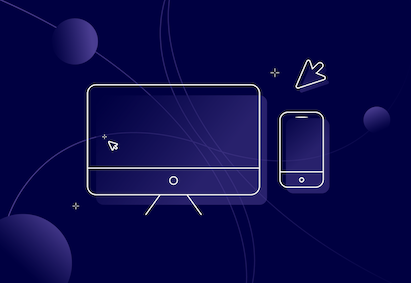A Guide to the Different Types of PR and Their Benefits
Something we hear a lot at Embryo is the question “how can PR help my business?”
And it’s a great question, as public relations and its benefits can be hard to pin down. There are many facets to PR campaigns, and many different types of PR, each with its own advantages.
If you type this question into a search engine you’ll find yourself looking at various explanations about what public relations actually is – and that’s because it can be described in a number of ways. There are also many different types of PR that public relations professionals can utilise. Essentially, public relations (PR) involves a brand, organisation or individual using strategic communication methods to promote themselves and influence the public’s opinion about them positively.
Actively engaging in PR not only helps the public to understand the purpose of you as a brand, organisation or individual, but it can also help with active engagement, building beneficial relationships, raising authority, demonstrating values, showing a positive image to your brand and communicating with the target audience, crisis communications and beyond. The importance of PR and the way it’s executed will of course vary depending on the industry or nature of business – for example, something which is controversial by nature may require more PR efforts, in an attempt to manage or shape the public’s view.
What is Digital PR? Why are Different Types of PR Important?
To some Digital PR is considered an extension or deployment channel of traditional public relations strategy, to others, it’s an entirely separate avenue altogether.
Digital PR involves creating unique, engaging, relevant and newsworthy content, which is to be pitched to journalists and publications to gain media coverage and links on websites. The content is usually part of a ‘campaign’ or a news story. Campaigns are larger in scale than regular news stories or news releases – they’re often data or asset-led, and sometimes brands create landing pages on their websites with all of the information, which could include infographics or video content.
Building Create Public Relations Campaigns Online
You might have heard of the phrase ‘hero content’. It’s common practice to aim to build a campaign around it. It’s generally defined as shareable content that involves a lot of planning and research, will appeal to a mass audience, have multiple uses and has a higher likelihood of going viral.
But not all valuable content that’s capable of gaining coverage in the press needs to be hero content. There’s still much to be said for the news stories and features which could, for example, include the following: a real-life, human interest story; exclusive data that’s not big enough for a campaign per se; an important industry-specific announcement; a brand or professional’s expert tips; a thought leader’s opinion on a breaking news story; news of a product launch, and much more! All of these methods can help to promote a brand, organisation or individual’s work or efforts.
What remains the same across the board, however, is that the content needs to be strong.
-
It’s good to think about how many of these questions you can tick off your list when you have an idea about what content to create:
- Is my content relevant? (generally, and to the publication and reporter)
- Is my content newsworthy?
- Is my content timely?
- Is my content engaging?
- Is my content unique?
- What can it offer that people don’t already know?
Digital PR is seen by many as a ‘link-building’ method – but it’s about so much more than that, and we’ll talk about the benefits, and why you should be utilising it to boost your search engine optimisation (SEO), later.
Digital PR can be executed in-house, or executed by a specialist agency, like Embryo, which has a specialist digital public relations team with years of experience not only in PR, but journalism too. The importance of finding or creating a news hook and the ability to write in the way a reporter would, shouldn’t be underrated. It saves them time in having to analyse and dig out the angle from a wordy and incorrectly formatted press release – and these are mistakes many PR professionals are still making.
The Difference Between Traditional PR and Digital PR
Traditional PR and Digital PR are intrinsically linked – and it’s often said within the industry that the former has evolved into the latter. Traditional types of PR have been around for a long time and were utilised long before news websites and news outlets existed the way they do today. The efforts involved gaining traction for a brand through press releases, which is what Digital PR professionals do now, but they heavily utilised in-print newspapers and magazines, the TV, radio, famous people and hosting events.
The key to success used to be building positive relationships with key contacts in the media. PRs would often wine and dine journalists – something which in today’s world happens much less often. Not only are journalists busier than they’ve ever been, but a lot of them also work from home full-time or part-time, post Covid.
SEO and Digital PR
Traditional PR skills are still incredibly important and are often transferable to Digital PR. But as the digital world has evolved, so have different types of PR, the PR industry as a whole, and its relationship with SEO.
We’ve already mentioned that link-building can inform an important part of a Digital PR strategy. Gaining links and brand mentions online, on sites with high domain authorities, can boost a brand’s overall authority online (among other things) and this is where the types of PR differ so much.
Today, many journalists’ headlines and stories are optimised and dubbed as ‘SEO-friendly’ to include keywords, phrases and questions that will help their stories rank better on search engines such as Google – and this is a method taken from SEO teams at agencies (or in-house) who create blog content for clients this way – although both have a lot more control about what is published on a website, versus what a journalist decides to publish from a press release sent to them.
The aim of optimised content is for it to rank as high as possible on search engine results pages. Many publications now employ SEO journalists and editors, roles which didn’t exist less than a decade ago.
Let’s use the example of asking a search engine a question. You might Google ‘when do the clocks go back in the UK?’ – and if you do, on the very first page you’ll find news articles from well-known websites, with headlines that mirror the question.
You’ll find more of these if you click on the ‘news’ tab too. They do this so their articles are favoured by search engines and can be found with ease. They have just as much chance of being viewed by a reader looking for an answer as a specialist website with the same information does. It’s the same for blog content, and as we mentioned above, press releases and stories can now be optimised too.
Some elements of PR are measurable, such as monitoring the amount of traffic to a homepage or product page after news of a product launch goes live or tracking the growth of a brand’s domain rating after achieving links to a client’s website over a longer period of time. But others aren’t – and that’s one really important thing to remember, which we’ll cover further on.
Ready to start your own growth journey?
Please get in touch with our team to find out more about digital PR, our approach to campaigns or to find out how we can help you grow your business.

Embryo were amazing to work with and delivered some incredible results for the brand. The team are so easy to work with and couldn’t do enough for us!
Array
(
[section_id] =>
[margin_top] =>
[margin_bottom] =>
[padding_top] =>
[padding_bottom] =>
[enable_form_cta] => 1
[enable_image_full_height] =>
)
Media: Owned vs. Earned vs. Paid
Many marketers and business owners will have heard these terms before, but where do the types of digital PR fit into these types of media, and what’s the difference between them?
1
Owned media
Owned media is any media that is created, controlled and owned by the brand. This could be for example blog content, the content in Facebook and Instagram posts, and the content within press releases before they’re sent to the press.
2
Earned media
This type of media is earned organically and will include a lot of the work public relations professionals do to gain their client’s coverage. It’s anything that’s earned naturally, including the sparking of a conversation on social media off the back of a viral campaign which has got people talking.
3
Paid media
Anything that is paid for such as sponsored ads, social media promotions, or advertorials, counts as paid media. Advertorials are adverts published on news websites or in print written in the style of an editorial article.
Different types of Digital PR
There are a number of ways you can carry out Digital PR activity and they may include one, or a mix of different methods, in order to achieve the best results. There’s no denying that competition is stiff when it comes to grabbing a journalist’s attention, but here are the most important elements to consider when putting together your overall strategy.
If there’s one rule, it’s that you need to tell journalists and readers something, or multiple things, they don’t already know. Data-driven campaigns have huge potential to earn links and drive traffic to sites, as well as get a conversation going. The more detailed data-led campaigns see Digital PRs and brands creating or trawling through heaps of trusted, unique datasets and conducting meticulous analysis to give them a variety of news hooks to play with.
Campaigns and stories can be based on new or exclusive data that can be sourced online, such as via Google Trends, on social media, from a client’s own internal database, from a survey conducted through an external facilitator or in-house at the brand, or obtained from a public body by way of a Freedom of Information (FOI) request, to name a few!
People base their whole campaigns around data or use them to add more weight to existing stories. You can use data to prove the point you’re trying to make.
Google Trends is a free tool that analyses the popularity of Google search words and phrases using real-time data. It shows what people are searching for, when, and from which location. Not only can this data help you work out when is the best time to cover a topic and when something is trending, but you can also show an increase or decrease in search terms over a period of time of your choice. This is something journalists value as Google is a trusted source.
Social media data can be sourced and used in many ways. One example is to analyse the number of views a hashtag has on TikTok. You might do this to discover how popular a trend is compared with others. If you were writing a piece about the most popular types of different weddings currently, you might search for #sustainablewedding – which has 12.4m views on TikTok, #winterwedding which has 89.3m views, and #humanistwedding with 4.6m views. You can do a rolling comparison between the trends to create a story with your key findings.
Creative campaigns often involve the kind of data we’ve discussed above, but that’s not always the case. When they do, assets like videos, images, infographics and GIFs can be created to showcase the data in an eye-grabbing manner. Assets work well on branded landing pages because they’re a good way of demonstrating key points without the need for too many words, which may lose a reader’s interest. But they’re not always based on stats and figures.
We’ve seen DPR campaigns that utilise wow-factor assets to demonstrate, for example, how a city might look if refused planning applications had been approved through the creation of new-world images using developer’s designs. Alternatively, GIFs that show viewers ancient landmarks around the world being restored to their former glory. These assets can also be used or repurposed for other digital marketing channels like social media.
These types of digital PR are ideal for those in the e-commerce or service-based industries, and while some of these methods are simpler than others we’ve discussed, they can be equally as powerful. The launch of new products and services can be published through press releases. But digital PR teams will also use commercial calendar dates to their advantage. For those selling products and offering deals, Black Friday, Christmas, Valentine’s Day, Mother’s Day and Father’s Day are key times to pitch products for inclusion in round-up articles and gift guides that might be titled say ‘the best Christmas gifts for her’, ‘Black Friday fitness deals you don’t want to miss’ or ‘Mother’s Day gifts for under £50’.
In recent years shopping reporters and editors have become roles more publications are filling, with pages dedicated to helping readers find the best products and deals. The key to success with this method is targeting the press who write about the brand’s product or niche and pitching it in an engaging way – the price of the product and how good the deal is will also play a huge part.
Where relevant, seasonality and trends can be the driving force behind consumer-focused content. As well as pitching products to be included in existing or future articles reporters may write, brands and DPRs can create their own to outreach. For a fashion brand that sells country attire, you might write an article about ‘the 10 best hiking boots for your Winter adventures’ and pitch it to journalists who cover fashion and shopping.
Something else to take advantage of is reviews – there are a lot of dedicated review writers employed at publications, or journalists who cover a specific topic like fashion who are happy to review items, as well as those who run blogs. Blogs usually have lower domain authority, which is an important metric to check first if your efforts are SEO-led. In general, however, reviews are great for brand awareness and are often a major factor at play when it comes to the consumer’s buying journey – they can be the difference between a purchase or loss of interest to a competitor.
Stories that contain ‘expert’ commentary hold a lot of value – provided the source is trusted, reputable and qualified – and these are things expert-led stories can help to build. Any company doing digital PR needs to think about which internal experts and specialists can be utilised when expert-led comments are needed. If a DPR was working with a doctor at a skin health clinic, they can use the doctor’s commentary plus potentially the founder’s from a business perspective.
Experts’ advice, knowledge and guidance are valued in the eyes of journalists and readers. Stories can be created solely on expert commentary, or to bolster an existing story on a relevant topic. You might create a story around a trending topic, for example, a skin health hack that is trending on TikTok – you can ask the doctor questions about whether it’s good for the skin, do’s and don’ts, and other advice. Or you might base your story around seasonality, and ask the doctor how best to nourish and maintain skin during the colder months. Tips and advice-based articles are still extremely popular, so if you can find the right news hook and ask the right questions, you have a better chance of gaining media coverage.
These are stories where people are at the heart of them, but still achieve a brand’s goal. A lot of human interest stories are described as ‘real life stories’ – powerful and engaging stories which are shareable, and provoke emotion and conversation. A lot of companies who have case studies can utilise their stories for promotion in the press. We can use the example of the weight loss case study mentioned above. You’d interview them and find out more about their backstory, what caused them to gain weight and so on, to determine the most newsworthy angle.
You can also utilise the stories of key figures within a business – perhaps a CEO who has changed career and fought off a lot of hardship to get to where they are today – which is running a multi-million-pound company.
Key figures like these can also be put forward to write opinion pieces for publications and be featured in leader profiles within their niche.
Reactive PR requires DPRs to remain fluid and flexible to work on opportunities that might not directly tie in with their main strategies. It’s a technique that is becoming increasingly popular within the industry, with some professionals even attributing the bulk of their media coverage success to reactive PR. Reactive PR is the practice of responding and reacting to news and trending topics and looking for ways to place a brand or individual within the conversation, which can help them to achieve different goals.
Big, breaking news stories and viral trends that journalists are keen to cover provide space for brands and people to step in and get involved by creating their own stories around them, or contributing to articles reporters are already planning to write.
Both of these form huge parts of Reactive PR. Newsjacking specifically involves jumping on the back of a hot news topic and using it to your advantage, and is usually done by way of using a brand’s data, insights or expert commentary to contribute to the conversation – providing it’s relevant. These don’t need to be in the form of press releases – you can simply send your information out to the reporters covering the topic, and you may find journalists add it to existing stories or that you’re their inspiration to create a new one. Of course, whatever you’re contributing needs to be newsworthy, unique or insightful.
The Covid pandemic and the constant changing of travel rules and restrictions we’ve seen in the last couple of years gave key figures within the travel industry the chance to give their thoughts and opinions about the news. Hotels, airlines, airports, and people who had their holidays cancelled or got stuck in other countries were a huge part of the conversation around that time.
Media requests can be golden nuggets. Also known as #journorequests on Twitter, journalists use them when they’re doing a call out for specific information, case studies or experts for their stories. Tools like ResponseSource and Twitter are great tools to use to monitor them, which is a huge part of the job for DPRs. Being able to respond quickly and work with clients to get the information or quotes required, the better chance there is of success. Not only do these gain brand mentions but it’s an effective way of building up links too.
Learn More About the Types of PR.
At Embryo, our digital PR team are always looking at new ways of building links, coverage, brand awareness, and DA, so why not get in touch and see how we can help take your online presence to the next level?

I'd recommend Embryo to anyone looking for digital marketing services. I've worked with Embryo on a wide range of tasks and can truthfully say the team will unfailingly go above and beyond to help you out. They're genuinely knowledgeable, talented people really willing to help.



